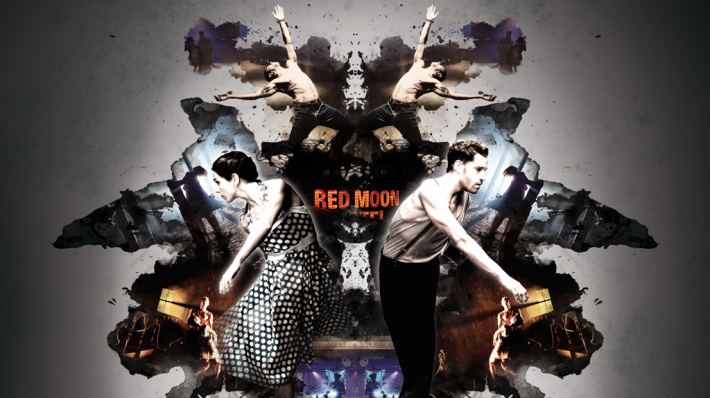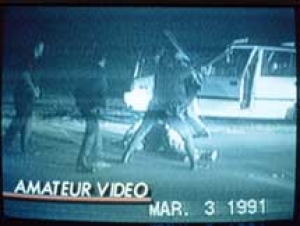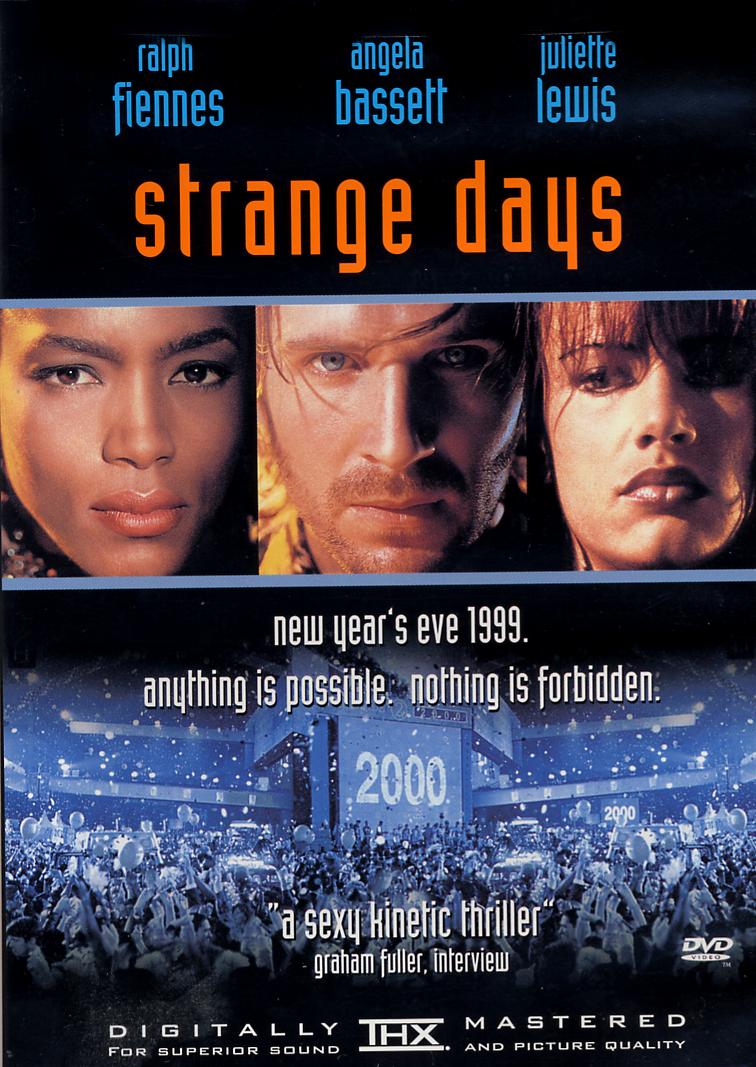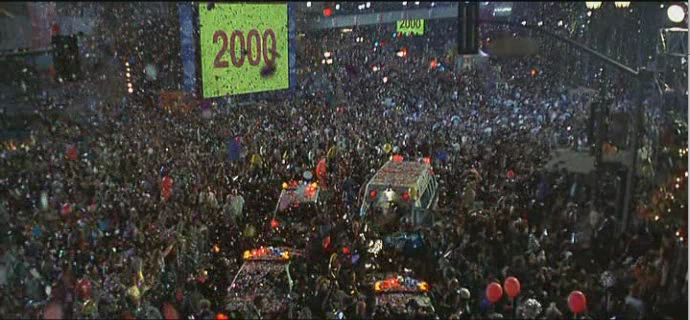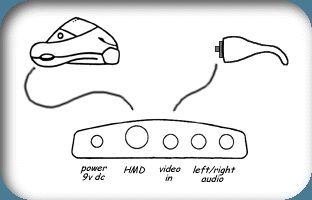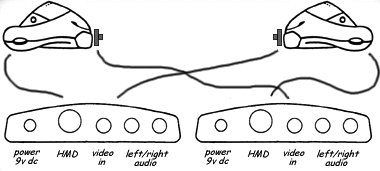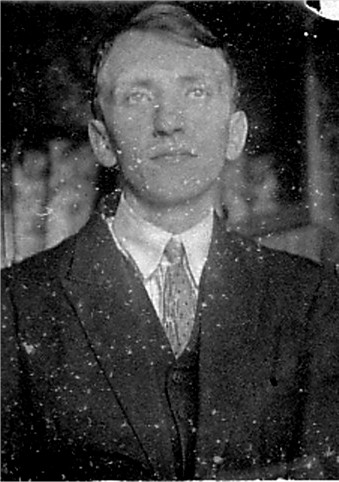translated from Swedish by Thom Kiraly. Illustration by Josefin Rasmusson.
Published in States of Play (PDF) (ed. Juhana Pettersson, 2012) for the Knutpunkt/Solmukohta conference.
Create a reality game for friends and family!
Play and storytelling have disappeared from our lives. Adventure has been demoted to being played out on computer screens and pages in books. Reality gaming offers a way to play the part of the adventurer or the explorer in order too rediscover reality and oneself. By coordinating a small reality game for your friends, you can create a story which will present them with enticing perspectives on everyday life.
Getting started can sometimes be a challenge, which is why we’ve assembled a model aimed at helping game coordinators come up with short stories for their friends. More often than not, the players will outnumber the coordinators, but this is not always the case. This article was written to give some pointers on how 1-3 coordinators could organise a reality game for 3-12 players.
Who is the Coordinator?
The coordinator is the manipulator, the conspirator, the puppet master, the guide. As the coordinator, your job is to create the conditions for an entertaining and exciting game. The coordinator could be likened to the director of a stage play, the game master in a roleplaying game and the organizer of a larp. The task is creating a framework wherein the players can step forward and act on their own.

Coordinator role: The Flaneur. The flaneur aimlessly wanders through the city. Simply take walks in town, preferably at different times of day, without a destination in mind. Follow every impulse, answer every question. Could that door be opened? Where does that ladder go? Readily visit ares you’ve never been before. What stations along the subway or bus lines have you never visited? Surprise yourself by walking for twenty minutes in a particular direction, e.g. northwest, and see where you end up, but don’t be afraid to make stops along the way. With your eyes peeled, you’ll discover interesting places that could fit a scene in the story which is about to take form.

Coordinator role: The Spy. The spy operates by informing herself, searching through archives and files to find revealing information on her surroundings. Using the right map, an exciting yard or hill or roof may appear. Satellite images from the internet and maps in libraries can be of great use. But there are also archives available to the public (in Sweden, thankfully, all documents traveling through or produced at a governmental institution are public documents. This means one has the right to request and collect countless maps as well as the blueprints of any house).
Entry Points
It is the task of the coordinator to invite people to play. There are two strategies for this. The first might look like this:
- Invite your friends and family to play a reality game.
- Allow people to sign up for the game.
- Explain the game’s rules (if any) and agreements.
- Start(ing) the game.
The other way of getting people into the game is staging an event, role or setting interesting enough for people to start investigating it on their own accord, without knowing it is a game. Games bleeding into reality without anyone noticing it are usually called seamless. The seam which has been used to join game and reality is an invisible one.
A game started using the sign-up method is easier to organize than its secret counterparts. Openness lends the game an air of security and participation. Secrets tend to breed caution and suspicion. Altering reality for someone not in on it is both hard and resource-intensive. Should you choose to use the obvious alternative, you can ask the players to simply “forget” that they’re playing a game once it has started. Trust them to indulge in playing the game.
The first scene of the game is important in setting a mood and creating a shared sense of commitment between the players. For example:
- Someone has put a note in the school locker.
- Someone has left a paper on the xerox machine at work.
- The player signs up for a class.
- The player becomes a member of an organization.
- A secret is revealed.
Perhaps a game is best initialized through human interaction. A crackly telephone call or a dodgy character seeking some kind of contact.
Who is the Player?
Who are we really and why? Who do we want to be and who could we be? What happens when you put on the wrong clothes, speak in the wrong way a go to the wrong place? Different roles create different possibilities for action. The player is the adventurer, the friend, the explorer.
Your job, as the coordinator, is involving the player in an exciting story. You can use any means necessary to accomplish this, but the player must have a reason to play the game, otherwise things will move forward very slowly.
Reality gaming has been compared to roleplaying in the streets. To some extent, this is an accurate comparison, but in a reality game, player and role can be viewed as one and the same. A role is a way of thinking or a social position the player inhabits in order to be able to act in a certain way that benefits the story and the life of the player. The player may have to be prepared to take on new roles in order to progress through the game’s story. Some parts of an identity are harder to alter than others. Gender, class and ethnic background are some of the most challenging parts to transcend, while occupation, interests and lifestyle are generally easier. Gender, class and ethnicity are deeply rooted in our bodies and social codes, hence the challenge. But everything is probably possible, neither bodies or social expressions are static and a lot revolves around symbols: a cross in a necklace, a bomber jacket, a hoodie, a suit.
Narratives Suitable for Reality Games
The stories of the reality game may very well follow the form of the game. Let the story show the players just how weak the walls of reality are, how we can break down all notions of what is and is not possible in order to find a fantastical world on the other side. This insight or experience can be conveyed in many ways.
Fight the power. Construct a story revolving around the teachers requiring the students to spy on them, find information, and undermine their judicial and elevated position. Or why not make it a game of paranoia, someone is out to get the players! They must escape this unknown force, information must be exchanged, but the enemy must not get a hold of them or the info.
Myths. Create a myth for the players to investigate. Stage a local ghost story or myth or make up one on your own! Many people are ready to believe in fairy tales and beasts, but preferably in a modern form. Pictures of UFOs are sometimes accompanied by the words “I want to believe”. Use that desire in your games!
Within literature and film studies, the concept of suspension of disbelief, describing how a spectator refrains from distrust, is often used to describe the same phenomenon. Films and books require the spectator to harbor a willingness to believe in the fiction. The reality gamer can possess the same willingness to believe, especially when instructed to do so.
Destructiveness. Avoid stories using self-destruction, violence and death as their basic elements, since our stories tend to turn into reality.
Creating a Game
Various environments, scenes and moods, which can be used to create a reality game, are presented below. Read and ponder what spaces there are in your area and what ways you could use them in within a story. Think of events and encounters which would be exciting to experience in these spaces. From there, it’s only a matter of making sure it all actually takes place.
We recommend starting small. Short, tasteful scenes, simple events turning into magic due to the fact that the players have never experienced them before. An unexpected encounter in an elevator, the newly conquered sensation of climbing under a bridge, the smell of spray-paint after having drawn a magical symbol on a rarely visited side street. Go through events from your past that you found exciting or transformative and try to use them for inspiration.
Coordinating is hard. If you manage to tie a story together using three working scenes as a first experiment, you should be pleased. Granted, there are games which have carried on for years, myths and stories which never seem to come to an end. The experiences and memories gained by the players will never be lost.
Some combinations of scenes and locations or players and locations may at first glance seem impossible. Give them a try! The unexpected often produce interesting results. How could a ritual inside a mall or an interview carried out in a tree house be made to come to life?
Agreements
By creating various agreements and rules for the reality game, the chance to give shape to otherwise impossible stories is also created. This can also be used as a way of creating a sense of security for the player. One common agreement in reality games is that everyone pretends that what happens in the game is “for real” and that they, to some extent, pretend that what is happening “for real” matters in the game.
In killer games such as Killer or Deathgame, “killing” players in workplaces and schools is usually forbidden. In the mid 90’s, weapon replicas were used in killer games. Following a number of incidents, the agreement was reached that it would be better if a gun was represented by a commonplace item like a banana, much like suggested in the original rules circulating as faded copies. Such agreements became important so coworkers and fellow students would not have to witness staged murders.
Rules and agreements can be formulated before play or emerge as part of the story.
The City as Stage
Stories and fairy tales can be found in our dreams, in poems scribbled on hidden slips of paper. In whispers around the campfire in the summer night. Now, we must dare to bring these stories into the streets, let them come to life in the seething warrens of people and unexpected encounters. The city could be a labyrinth of possibilities, but it has grown into a wretched, repetitive pattern where everything seems unpredictable.
Free/open spaces
The spaces we call free lack clear agreements on what one may or may not do. Thus, the players are giving a larger space of action. Defining an event which fits the framework of the story is easy, because pretty much anything could happen.
Abandoned buildings. There’s almost always at least one available nearby. Getting inside could present somewhat of a challenge, but once you’re in, the possibilities are vast. Sometimes, electricity is available which means audio equipment can be used. Works great for discoveries, encounters, surrealism, creation. Watch out for alarms and holes in floors. Look for a way onto the roof and also for alternative ways to enter the building.
The Underworld. In most cities, there are plenty of underground tunnel systems and spaces: shelters as well as tunnels used for telecommunications, storm water, gas, district heating, etc. If you have any kind of opportunity, be sure to bring you players down into the underworld, it’s an experience they’ll never forget. Make sure they bring at least two flashlights with them. Suitable for discovery, ritual, exploration, gatherings.
Park. An excellent place for playing. During the day, it’s green and soft and open, in the nighttime it is dark and easy to hide in. The park is dynamic, it can be both safe and frightening. In the fall, it turns yellow and red and poetic. Suitable for virtually any kind of scene or situation.
Square. The very symbol of “public space”. This was, once upon a time, the space for public dialogue on political issues. In the square, attracting attention is easy. Everyone can see what everyone else is doing, which of course has its pros and cons. The square suits, among others, the action, gathering or surrealism.
The tree house. Tree houses easily get your imagination going. Playing on childhood emotions is easy. In a well-hidden tree house one can observe without being seen. There’s also the more advanced “tree house” at camp sites, where one can organize a sleepover.
Roofs. Believe it or not, but every house has a roof. You don’t often go there, but there they are. From these roofs, one can get a good view of the city, it could be appropriate to get such a view at the start of a game in order to get the lay of the land. Or, on the other hand, the game could end at such a spot to give the player the opportunity to look back at the journey she has made.
Seized spaces
These spaces have a clearly defined agreement on what is and is not allowed. This makes playing in them more difficult, and all the more exciting. These spaces create a drama as soon as the players are forced to break with any of the functions the space was initially intended to serve.
Mall. A challenge for every reality gamer is doing anything at all inside a shopping mall. These privatized mega halls offer a very limited space of action. According to the agreement, we are allowed to do two things: looking and shopping. Thus, any scene is a challenge of this space as it does not suit any scenes. Nonetheless, it deserves to be bombarded with play. Watch out for security guards.
School. What could potentially be an amazing platform for creativity, play and collaboration is today a reformatory institution where juveniles are kept to prevent them from coming up with any mischief. It’s a sort of prison up until adulthood. School is a natural starting point for r-gaming.
Buses and trains. Means of transport are temporarily closed rooms that often have a low-key social character. It can be difficult to plan scenes during the journey, as players can easily end up going away from the scene.
Work. It easily becomes misleading to say anything in general about workplaces because they look so different. Workplaces are often difficult to infiltrate with play. The left behind rules of Fight Club is a great example of how limited resources can cause a good deal of confusion. As a teacher or youth recreation leader, you have tremendous opportunities. With more asocial jobs, such as subway ticket vendor or programmer, this turns into more of a challenge. Reality games at work can produce results of great importance to your daily life. You can get a close-knit team to poke fun at the boss, allowing the game to highlight the constant conflict going on between employers and employees.
Cafe. Suitable to use in scenes which are based on speech and dialogue. If you ask nicely, the staff can play music that fits well into the scene.
Temporary spaces
In these spaces there are different agreements depending on when one finds oneself in them. They are social spaces rather than geographical ones. They arise for a short period and at that location, specific agreements on what to do and what not do to are in effect. Examples include clubs, festivals, camps, flea markets, group therapy sessions. We recommend using temporary spaces as part of the story of the game because they, in their basic form, already involve the type of state of emergency that reality gaming often leads to and is nourished by.
Closed spaces
Closed spaces are, in many ways, similar to larp or temporary autonomous zones. With “closed space”, we mean that all elements, all suggestions, which are experienced at this location are part of the game and its story. These spaces are not reached by consensus reality, except in the form of memories and habits. What is exciting about closed spaces is that the experience of playing the game can really be stepped up, what’s sad is that reality is rarely changed as a result of what goes on inside these closed spaces.
Organizations
Every story needs a few parties who can return in different contexts and boost the drama in one way or another. One way of including such parties is to simply create new ones. These may include businesses, cults, goverment agencies or schools. Remember that an organization based abroad is harder to check the credibility of than one based in the country you’re playing in. Of course, you only need to create the image of the organization, rather than the whole organization itself. The impression given by business cards, websites, logotypes and name tags go a long way.
Scenes and Events
The job of the coordinator is to put the player into interesting situations. The players should never have to force themselves to understand how exciting, dangerous, dangerous or amazing a scene is. They should feel it. A free fall and you’re frightened, a hand in yours and you feel closeness, someone kneeling and you feel revered, ropes around you wrists and you feel captured.
Meeting. Put your players in contact with one or more people who could help them or who themselves need help with something. Make sure that the role or person they meet is exciting and peaks their interests. Perhaps the person wants to share knowledge or information? Perhaps the role needs help with something or the players need help from the role?
Interview. Perhaps your players must be subjected to an interview to join a secret organization? Or maybe a confused journalist calls to find out more about what the players are up to? The interview forces the players to express themselves about what they’ve experienced in the game. It can sometimes be important for the coordinator to gain some insight into what the players have been through, without having to interrupt the flow of the game.
Discovery. Searching which leads to something often revolves around a location, an object which is of great importance to the story, or a setting the players are able to experience and end up in thanks to the game. What magical places are there in you area? Having your players watch the sun rise over an old quarry or sneak into a hotel swimming pool during peak season can serve as titillating experiences and strong story elements. Discovery must be driven by the curiosity of the players. The coordinator’s task then becomes to bring out that curiosity and present incentives to make the players follow their impulses.
Actions. An important part of r-gaming is the players showing courage: that they dare act and take place on the stage of reality. This can be done in many different ways. Take inspiration from political actions and street theater.
Interventions. The situationist movement used the term “intervention” to describe operations in the urban environment which turned a situation on its head. For some examples of such mischief, do an online search for “flash mobs”.
Investigation. Scanning one’s way through unfamiliar surroundings in the search for an unknown object or an important person. Take inspiration from detective novels.
Creation. Have your players engage in some form of creative process related to the story. Perhaps they must write a letter, build a radio transmitter or repaint a wall? Creativity brings the group together and lends confidence. It’s important that whatever is created is also used in an upcoming scene or is directly relevant to the scene already taking place. Other, more commonplace examples could include cooking food or making a fire.
Journeys. A long walk or a bicycle ride, rowing across a lake to an island or getting in the car are all forms of transcendence. Journeys often mark a shift in a story. They can also function as build-up for a decisive scene.
Rituals. Rituals can be used for many different purposes; as a way of gathering power, as a way of transcending ones everyday identity, as a way of directing one’s energy or attention toward something specific, as a way of obtaining new abilities, sharpening one’s senses.
Infiltration. Give the players a reason to blend into a new environment and social context, a subculture for example, or any other closed group. If your friends are aesthetes, put them into a new context with technologists or vice verse. Outfitting oneself with a whole new style is not expensive if one does it at a second hand shop or at a flea market.
Surrealism. Establish a sense of unreality. This can be done in different ways. Take inspiration from surrealist art and David Lynch movies. If the players encounter an instructed role, this person could repeat the same line several times, using the same body language. That would create an unpleasant situation with a touch of déjà vu.
Confrontation. Scenes wherein a group of players are asked to answer for what they have, or have not, done, either by another player or by an instructed role. Perhaps someone wants to make them do the right thing in a situation? Maybe there are friends who are their enemies and enemies who are their friends!
Picnic. Coming together to share, e.g. food, is always a good thing. This could bring together players or groups of players. What is shared can of course be something other than food, such as music or stories.
Duel. Weaving creatively oriented conflicts and challenges into the game can be a lot of fun. Playful brawls can be staged using dancing such as capoeira or break dance or even balancing acts, music jams or songs.
Debriefing
After a reality game, it’s important to get the players talking to each other about what they have and have not done. If they know each other well enough, this will happen spontaneously. Otherwise, elements which encourage the players to talk about their experiences in a written form could be woven into the story itself. Perhaps the player receives a letter from a fictional character asking for an explanation of what has happened or you as the coordinator can simply ask for feedback after the end of the game. Another way of getting feedback is letting an already informed friend participate as a player and ask her, behind the scenes, how the game has been going.
The ending can be orchestrated in many ways. You can either put together an evidently epic finish, or you can let the story slowly fade away and thus let the game slowly sink into the everyday lives of the players. Perhaps that will make the game linger in the minds of the players for a bit longer.
This article has sought to identify and summarize some of the experiences we’ve had in connection with various reality games created by Interacting Arts, i.e. as Scen 3 (Stage 3, 2001-2004) and Maskspel (Maskplay, 2007). This is neither the only nor the best way of producing reality games, but it is a starting point. Research and exploration of different methods will continue.
